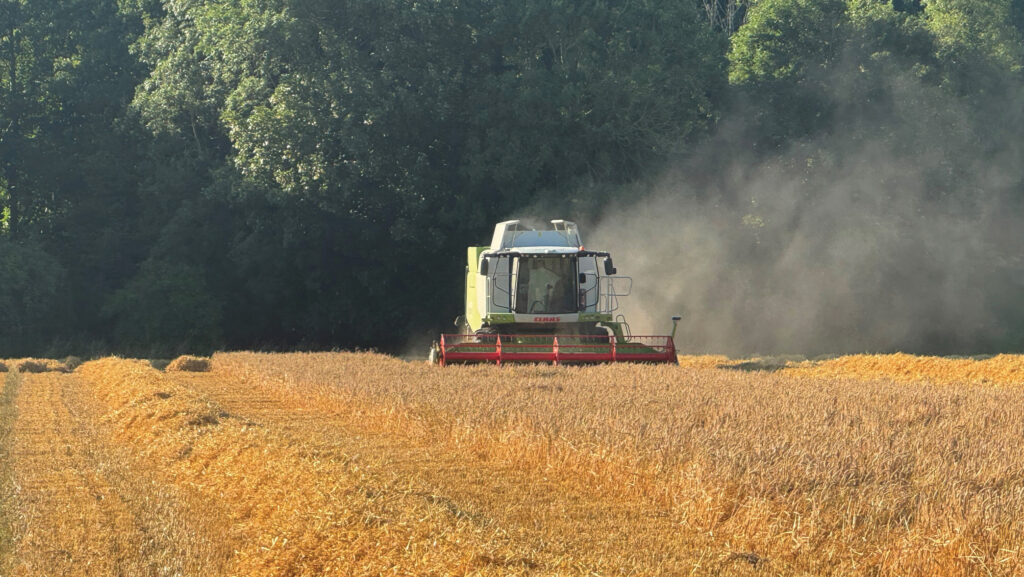Harvest 24: Impressive start to winter barley harvest at mixed family farm
 Rupert Hoare's winter barley harvest © Rupert Hoare
Rupert Hoare's winter barley harvest © Rupert Hoare Winter barley was the first crop to hit the combine at Rupert Hoare’s mixed family farm in Sussex last week, with the variety Tardis yielding an impressive 9.75t/ha.
Despite battling with the challenging growing conditions, Rupert was pleasantly surprised with the crop’s performance, which achieved a specific weight of 67kg/hl and moisture content of 13-14%.
“I’m amazed with how well the winter barley has performed. We are on fairly free-draining soil here in Sussex and I’m surprised with how well crops have looked. Yields are not too dissimilar to previous years,” he says.
See also: Why adjusting nitrogen use can regenerate soil and crop health
Harvest started on 19 July during the two-day mini heatwave, where temperatures climbed to 28C.
However, Rupert noted that just the week before, 100mm of rain fell, including 23mm of rain in half an hour.
A robust three-spray fungicide was deployed during the spring on the 6ha barley crop, with a total of 170kg N/ha applied in three splits.
“We’re a mixed farm so only grow a small amount of winter barley for our head of 50 beef cattle and 30 outdoor breeding sows, which we sell and market through our farm shop.”
Rupert tends to drill cereals in the first week of October to avoid risks of barley yellow dwarf virus and grassweed pressure, aiming for a cleaner crop come spring.
Oilseed rape
Oilseed rape was next up for the combine at the 110ha farm, with initial yields peaking at 4t/ha with a moisture of 7.5%.
“We aim to drill rapeseed in the beginning of September in order to miss the first flea beetle migration period.
“We then go in with an application of sewage sludge to help deter the flea beetle, aiming for an optimum seed-bed. If we can achieve 4t/ha average this season, that would be brilliant,” he says.
Milling wheat
The farm’s 30ha of milling wheat still has a considerable way to go before harvest, continues Rupert, who farms in partnership at the family farm, 10-minutes drive north-west of Chichester.
The variety Crusoe has been particularly problematic, with breakdowns in genetic resistance to brown rust.
This prompted the use of a T4 spray for the first time, bringing the total fungicide applications to five, with a chemical spend of £175/ha.
“We opted for a T0 early in the spring to get brown rust under control. By T2, the disease was becoming prominent and we knew it could be an issue.
“We decided to go for a T4 – which is unusual for us – to keep the crop greener for longer, otherwise it would have really hit yield.”
Although it has been a particularly challenging year for disease in Crusoe, Rupert is still hoping for a yield of 8.5-9t/ha.
“It’s all about maintaining quality and hitting that milling spec, so it was worth going in with the extra fungicide spray,” he says.
Next year, however, his plan is to reduce his area of Crusoe by half, in favour of the variety Zyatt.
Malting spring barley and maize are also destined for harvest at Adsdean Farm, where Rupert remains in good spirits for the season ahead.

